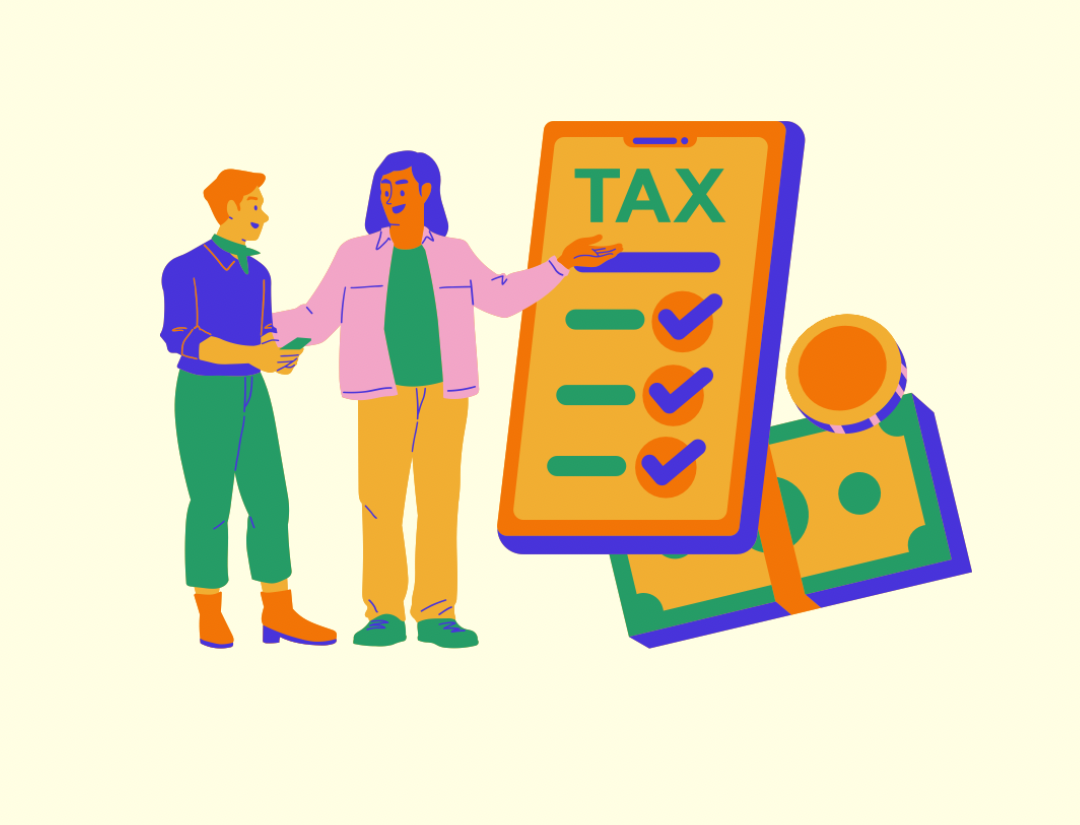There’s no doubt about it: adulting is hard.
As I move along in my 20s, I’ve realized there are so many life skills to learn that I was never taught in school. Along with parallel parking, balancing a checkbook, and yes, even setting up a doctor’s appointment without hyperventilating from anxiety, filing taxes is definitely up there.
Just thinking about taxes can be stressful – this is my very first year filing, and I admittedly am a bit confused about how to fill out the forms and filled with anxiety in fear I’ll mess up. But that’s OK – because something I know to be true is that you don’t ever have to go through anything alone. So I’ve reached out to the credit experts of Experian and tracked down some information from the IRS to get step by step help. Check out the Taxes 101 Guide below for the ins and outs of taxes:
When someone says “filing taxes,” what do they even mean?
When someone says they’re filing taxes, they’re referencing a tax return – forms you file with the IRS to report your income, calculate the tax you owe, and determine whether you’ll owe additional taxes or receive a refund.
Do I even need to file a tax return?
You need to file if:
- You’re an employee who made over $12,950 in 2022 (You can check the W2 form from your employer to see how much you made.)
- Your parents don’t plan to claim you as a dependent and your unearned income is more than $1,150 or your earned income is more than $12,950 in 2022
If you’re still unsure whether you need to file, you can visit the IRS’ Interactive Tax Assistant to assist you!
How to File Your Taxes
Now that we’ve covered the basics, let’s get into the nitty-gritty of this. You’ll file your individual taxes using this IRS Form 1040, which asks for your filing status (are you single, married, etc?), your personal contact information such as your social security number and mailing address, and your dependents (ex. children).
From there, you will report your earnings and income:
- This includes wages and salaries (shown on your W-2 or 1099 form from your employer), tips, business income from independent contracting, investment and interest income, retirement distributions and Social Security benefits.
Add up the taxes you’ve paid:
- Tax withheld from your paycheck (shown on your W-2) and estimated taxes you’ve paid throughout the year
Determine your deductions:
- A deduction is an expense you can subtract from your taxable income to reduce the amount of tax you pay. (Needless to say, I loveeee deductions!) When it comes to deductions, figure out if you’ll take the standard deduction or itemized deductions.
- Standard deduction: This is a single predetermined deduction by the IRS that allows you to deduct $12,550 on your taxes. Standard deductions are simple, predictable, relatively generous, and don’t require extensive documentation or math.
- Itemized deduction: Individual expense categories. Examples include charity donations, home mortgage interest, medical expenses, etc. If you itemize, you’ll file Schedule A separately to show your deductions.
- To learn more about these different types of deductions, click here for an even more detailed breakdown.
- Tax credits such as the American Opportunity Tax Credit, Student Loan Interest Deduction, child tax credit, child and dependent care credit, earned income tax credit or other refundable or nonrefundable tax credits (shown on form 1098-E or 1098-T) are also included in this category.
Determine your refund or the amount you owe: Finally, the moment of truth! After calculating your tax for the year and comparing it to what you’ve paid in withholdings and estimates, you’ll see if you’re entitled to a refund or if you owe money to the IRS.
How do I know the IRS actually received my tax return?
Your tax return (and refund) status can be checked on the IRS’ Where’s My Refund portal or mobile app IRS2GO within 24 hours of e-filing or four weeks of filing by mail. While most refunds are issued by the IRS within 21 days of receiving a tax return, they can sometimes take longer.
Until when do I have to file?
Like work and school assignments, taxes also have deadlines. The deadline to file your taxes this year is April 18th. However, life happens, so if you need more time, you’re allowed to file an extension for six more months, meaning you’d have until October 16th.
Is there anything else I should know?
Remember to double check your tax return – you don’t want to make any mistakes or report any inaccurate information, and be sure to keep a copy of your tax return in your own files for about three years.
Phew! I know that was a lot of information, but I hope this outline of how to file your taxes was helpful. In case you’re still feeling like you need support, know there’s resources to help, such as the IRS Free File program, which lets you use brand-name tax software for free, and these other zero-cost options!










